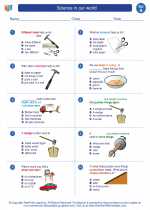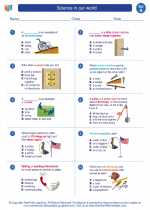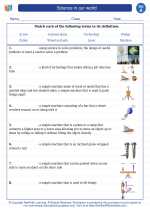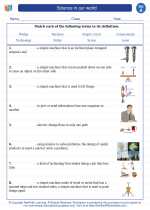Reflection in Science
Reflection is the change in direction of a wavefront at an interface between two different media, so that the wavefront returns into the medium from which it originated. This phenomenon can occur with various types of waves, including light, sound, and water waves.
Light Reflection
When light waves encounter a smooth surface, such as a mirror, they can be reflected. The angle of incidence, which is the angle between the incoming light wave and the normal (a line perpendicular to the surface), is equal to the angle of reflection, which is the angle between the reflected light wave and the normal.
Sound Reflection
Sound waves can also be reflected off of surfaces. For example, when you speak in a room, the sound waves are reflected off the walls and other surfaces, allowing you to hear your own voice and the voices of others. This is why sound can travel around corners and through doorways.
Water Wave Reflection
Water waves exhibit reflection as well. When waves encounter a barrier or a change in depth, they can be reflected back in the opposite direction. This can be observed at the seashore, where waves reflect off the shoreline and bounce back into the ocean.
Study Guide
- What is reflection in the context of waves?
- How does the angle of incidence relate to the angle of reflection in light waves?
- Give an example of sound reflection in your everyday life.
- Where can water wave reflection be observed?
Key Concepts
- Reflection is the change in direction of a wavefront at an interface between two different media.
- The angle of incidence is equal to the angle of reflection for light waves.
- Sound waves can be reflected off of surfaces, allowing sound to travel around obstacles.
- Water waves exhibit reflection when encountering barriers or changes in depth.
◂Science Worksheets and Study Guides First Grade. Science in our world

 Worksheet/Answer key
Worksheet/Answer key
 Worksheet/Answer key
Worksheet/Answer key
 Worksheet/Answer key
Worksheet/Answer key
 Vocabulary/Answer key
Vocabulary/Answer key
 Vocabulary/Answer key
Vocabulary/Answer key
